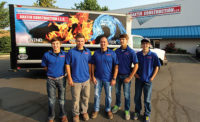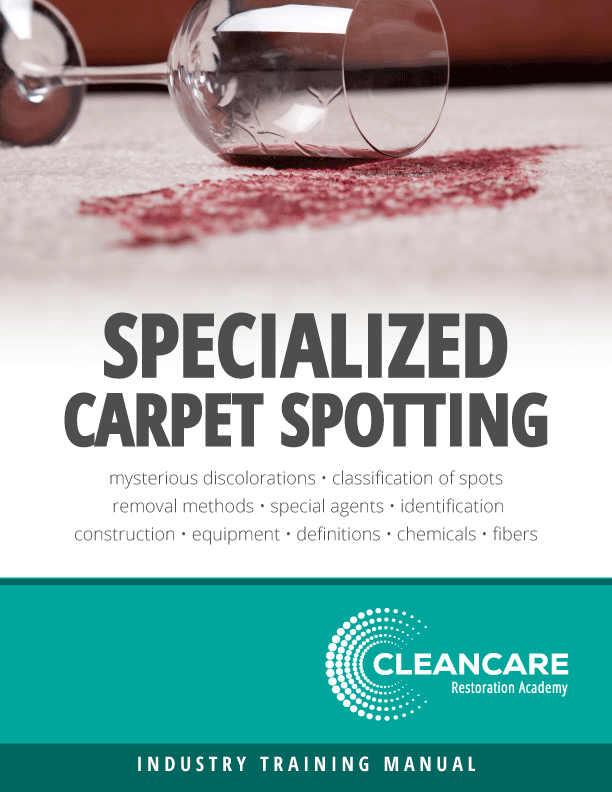Commercial Shooting Complicates Bio-Remediation Efforts: A Case Study








In some situations, crime scene cleanup technicians contend with more than just blood, biological materials and the danger of bloodborne pathogen exposure. For instance, when an incident occurs in a government building or other highly trafficked area, protecting the health of the public is also a top priority for all those involved. It is also safe to say that most companies are concerned about disrupting the regular flow of business. Furthermore, in highly publicized cases, media attention can make remediation projects even more difficult. Additional vehicles, curious bystanders and an increased police presence can lead to further stress on the family or property owner, as well as employees who are tasked with the cleanup. For these reasons, it is important to return the space to a normal state as swiftly as possible.
Noting that, this brings me to a situation that occurred last May, when a Connecticut business phoned a local crime scene cleaner for assistance following a shooting in a public establishment. Without warning, a customer at one of the company’s locations had opened fire with a handgun during normal business hours, injuring himself and one other. Fortunately, both individuals survived and the individual responsible for the shooting was later charged with attempted homicide.
As a nationwide crime scene cleanup company, Aftermath Services LLC specializes in handling difficult and potentially hazardous cleanups where blood and other biohazardous materials may be present. Trained technicians were immediately dispatched to the customer’s location, where they were greeted by a heavy media presence. From the start, discretion is necessary when handling sensitive situations like this. In order to preserve customer privacy throughout the cleanup process, technicians utilize non-descript work vehicles. They are trained to conduct themselves professionally and know to direct all questions to the property manager or an appointed spokesperson.
A supervisor made contact with a company representative, and once police investigators cleared the scene for entry, he was escorted onto the property to visually access the situation. In this case, it was agreed that the cleaning crew would wait until after the crowd dispersed before they began work.
The shooting occurred in a heavily trafficked area of the facility, and drops of blood and other biological fluids were visible in several places, including the path of extraction used by emergency personnel to transport the injured from the scene (See Image 1). To prevent cross contamination with unaffected areas, technicians staged three zones, including a control zone, a buffer zone and a clean zone. Unused supplies were stored in the clean zone for easy access, the control zone was used to eliminate further cross contamination between affected areas and the technicians used the buffer zone to disinfect equipment and remove PPE.
Once preparations were made, technicians applied Biotic Solvent to the tile floor in the contaminated control zone where the incident occurred. They then wiped down the area to remove all the blood and biological materials, no matter how stubborn. With the customer’s permission, any tiles that could not be successfully cleaned were broken up with hand tools and the floor underneath the affected tiles was also treated. In cases where flooring is made of a porous material such as wood or ceramic, it’s recommended to remove the affected area. Microorganisms can become trapped in these surfaces, making them impossible to disinfect. Another hard surface wipe was performed and the grout between tiles scrubbed with wire brushes to achieve a maximum level of cleanliness.
When all visible traces of blood and bio were removed, technicians employed an ATP test to look for any hidden traces of microorganisms. Traditionally, hospitals and food manufacturers use ATP-based testing as a method of ensuring the effectiveness of sanitation efforts. ATP testing relies on measuring adenosine triphosphate, a coenzyme that drives energy in all cells, including living or dead animal or vegetable matter, bacteria, yeast and even bloodborne pathogens. The test works by exposing a sample, collected with a special swab from the surface, to a naturally occurring luciferase enzyme. When the enzyme comes in contact with living organisms it produces biolumincence, a light that is made visible by a special instrument called a luminometer. This state-of-the-art testing process ensures that anyone using the company’s service is left with the safest conditions possible after a tragedy. The test also helps protect employees and customers from the dangers of bloodborne pathogens, thereby insulating the business and its reputation against further scrutiny during an already difficult time.
In this case, initial ATP test results came back negative and the establishment was declared safe for use. Technicians carefully packed up their gear while the supervisor photographed the scene and documented the final results. As the technicians prepared to leave, the customer’s representative expressed his gratitude for a job well done. Though it would require some additional cosmetic repairs in the future, the location was ready to open for regular business the following day. Leaving the property free from all harmful pathogens, the client was given peace of mind knowing that no surprises would emerge.
By responding quickly and discreetly, bio-remediation companies can help reduce a multitude of risks experienced by management companies and business owners who face a biohazard situation. In this case, having a plan in place and immediately calling a professional cleanup service enabled the customer to avoid additional and unnecessary strain on the business during an already challenging time.
Looking for a reprint of this article?
From high-res PDFs to custom plaques, order your copy today!











